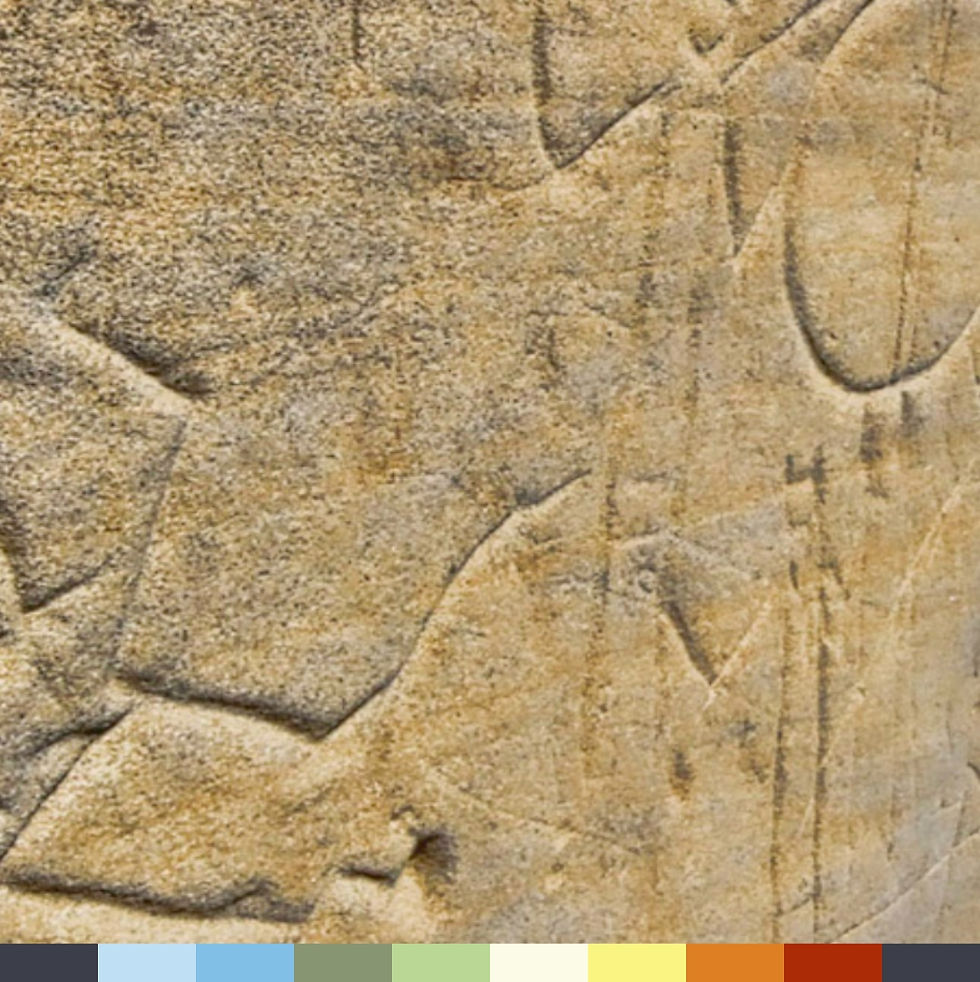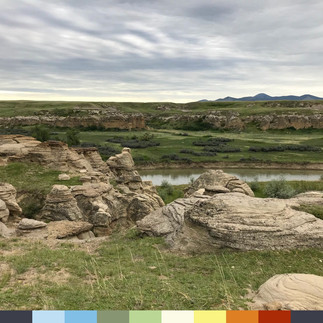
Writing-On-Stone Provincial Park or Áísínai'pi (”it is written”) as the Blackfoot First Nations named it, is situated in Southern Alberta, approximately 100 km south-southeast of Taber on the border with the USA. The Sweetgrass Hills overlook the awe inspiring and magical canyon in which the Milk River finds its way. The hoodoos, cliffs and other sandstone structures make this a place that evokes wonder, connection and peace. Carvings and paintings are found on some of these rocks, hence the name of this area. I can totally see and feel why this is a special place for the First Nations who frequented this area for many hundreds of years.
Most of the rock art is dated between 100-500 years old, but some is believed to be over a 1000 years old. Writing-On-Stone Provincial Park protects the largest concentration of native rock art on the Great Plains. Hundreds of petroglyphs (rock carvings) and pictographs (rock paintings) are found in this valley.
For the Blackfoot this has always been a sacred place for they believe the “writings' found here are the work of the spirit world. In the old days, Blackfoot elders would often visit Áísínai'pi to leave offerings to the spirits and to consult the rock art for signs and omens. In Blackfoot tradition, dreaming opens the window to the spirit world where powerful beings dwell. The writings were a way of communicating with spirits encountered in dreams. Since it was best to go and dream where the spirits live, Writing-On-Stone was considered a sacred place.
Archaeologists consider the rock art the work of native artists. Without a written language, native people preserved history primarily through storytelling. Rock art provides another window into their past by providing a visual record of their relationship to the spiritual and physical world.
The art can be distinguished in two large groups. The art of the Dog Days, before horses, and the era after. The Dog Days art is mainly ceremonial in origin illustrating the strength and importance of the spirit world. Native people would use large body shields for protection in battle depicting the warrior's medicine sign and those are depicted in the rock art of that era. Once horses became part of native culture the large shields were abandoned probably due to their impracticability. The art from that era therefore does not depict those shields but includes lots of horses and guns. The latter two were acquired by native people in the early 1700's from Euro-Canadians. The high demand for these items increased contact and conflict between native groups and as a result the rock art became more biographical with the increased importance of horse raids and counting coups.
The Milk River valley was created approximately 1500 years ago. At the end of the last ice age, torrents of meltwater carved the Milk River Valley out of the soft sandstone. The exotic hoodoos, ravines and cliffs are the results of thousands of years of erosion by wind, water and freeze-thaw cycles and continue on to this day. The proximity of the Sweetgrass Hills, the semi-arid climate and the diversity of the environments result in a great biological diversity with a number of rare and significant species.
Archaeological evidence shows that native people have used the Milk River valley for at least 4000 years. Many ancient campsites have been discovered at Writing-On-Stone proving the importance of this place for native people to hunt for game and to collect berries. I would also think that the valley provided shelter from the elements that one would be hugely exposed to on the plains above the valley. The small flat areas next to the river provide perfect camping areas with all necessities in short range. Other archaeological evidence also suggests that the region has been used as a sacred or ceremonial site for thousands of years. Here, the powers of the spirit world were all around.
It is a stunningly beautiful park which I will surely revisit for a longer visit to explore it to its full extent. There is an interpretive centre, several beautiful hiking trails and a beautiful campsite with nice amenities for all. Interpretive signs are located in many areas to help understand the history and significance of this place. Since it is located far away from any major routes it gets really quiet and the sounds of nature are all that can be heard. For me that is the time when I really feel at home. It is this connection with nature and our rightful place in it that gets droned out by the noise of every day life. Every time that I am in a place where there are only natural sounds I can feel that connection very strongly. From that perspective I can totally feel why this is such an important place to the people who came here many hundreds of years before us. It is totally magical and maybe the medicine that we need as humans!
Source: Interpretive signs in “Writing-On-Stone” Provincial Park
Find more information about the park and how to get there at https://www.albertaparks.ca/parks/south/writing-on-stone-pp/






































コメント